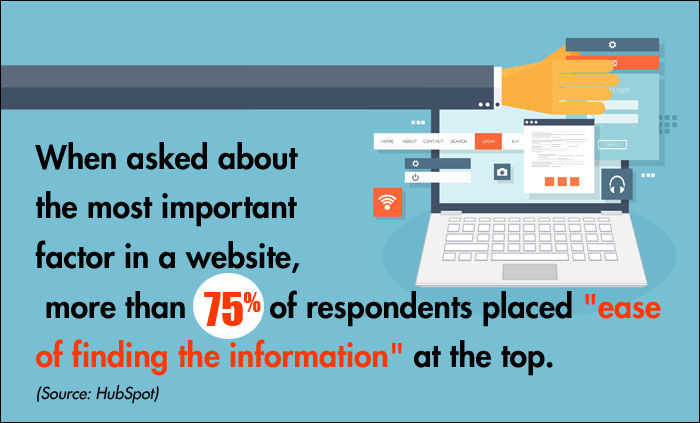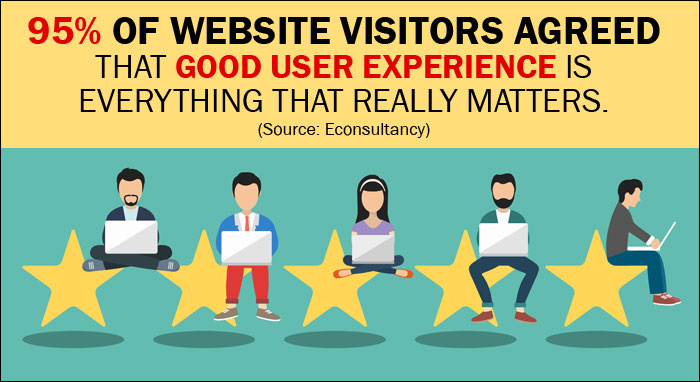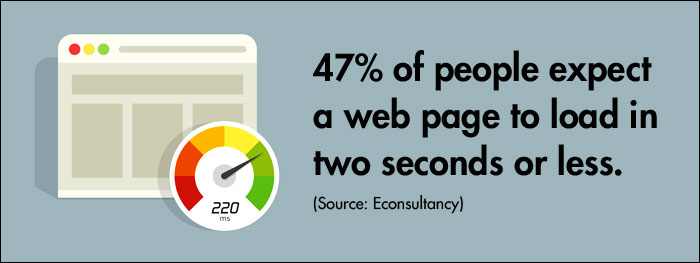Is Your Medical Practice Website Patient-Friendly?
Posted on
The Internet is a very competitive place. Getting potential patients to your medical practice website is only half the battle. The more significant part of the struggle is to keep your website visitors engaged. It is also important to give them reasons to return to your website and to share their pleasant experience with others in their social circle. If this sounds like a lot of work, that’s because it is. Managing and promoting a website that is informative yet patient-friendly is an ongoing endeavor.
Having a patient-friendly website is as critical as having an attractive website design. Unfortunately, in our pursuit of excellence, we tend to ignore the brilliant concept called usability and start focusing more on esthetics. A successful website is a combination of content, features and esthetics. All of these working together to create a seamless user experience. This combination will keep your website visitors coming back for more. This is because a useful website draws and retains visitors, making them much more likely to become loyal patients.
Remember the “3-Seconds” Rule
According to researchers at Missouri University, visitors spend approximately 2.6 seconds on a website before deciding whether or not they want to stay on that website. This means you have a less than three seconds to convince your visitors that you can satisfy their healthcare needs. Is it possible to make a good impression in such a short span of time? Yes.
You have just a few seconds to bring your potential patient into your world and to tell him or her a compelling story that disrupts their thoughts enough to click around and get to know your practice. Average time on a website is a metric that Google uses to decide if your website is valuable. This means your website must be rich in content and add value to your visitor’s life. Which means you must design a user experience that is aligned with your patient’s journey. To achieve this, you must engage your visitors. When your visitors come to your website, they do not expect it to take a long time to load or be difficult to navigate. If your visitors are not having a pleasant experience, you will end up losing potential patients.

User experience is nothing but the art of making your website simple and easy to use. Understanding your patients’ behavior gives you insight into what features work and what features don’t. Some of the most fundamental usability tips include easy navigation, useful content and good-quality visuals. There is no magic wand for creating a website that your patients will fall in love with. However, there are things you can do that will contribute to the pleasant user experience.
So, what makes a patient-friendly website? How can you set your practice website apart from your competitors? Here are some tips to focus on for success in 2018.

Tip #1: Simple Navigation
Navigation is key to usability. Simple and easy navigation is what will set your website apart from the rest. Your website visitors must be able to find what they are looking for easily and quickly. Studies have shown that most website visitors are not willing to stick around and figure out a complicated navigation menu. If your website structure is not user-friendly, you will lose the potential patient.
Mistakes to be avoided:
- Information is hard to find. Visitors should not have a tough time navigating through your website. You website menu should be simple.
- Avoid using uncommon abbreviations and acronyms.
- Try not to have multiple layers of menus.
- The absence of a search box will make your website difficult to navigate.
Best practices to be followed:
- Limit the number of menu items. It is advisable to limit the number of sections to seven or fewer.
- Navigation should be simple and positioned across the top of the website or down the left-hand side for optimum effect.
- Use descriptive titles when naming your sections.
- Make sure your logo navigates back to the homepage of your website.
Tip #2: Readability
Readability is one of the most important factors in determining the user-friendliness of your website. Your website visitor should be able to grasp the information quickly and with very little effort.
In fact, most readers will not even read the entire information on your website. They will just scan it. According to research by Nielsen Norman Group, most website visitors read just 28 percent of the total content. This means even in an ideal scenario, most readers will not read more than two-thirds of your website content. So in order to appeal to your target audience, your website must be scannable. Here are some factors that contribute to your website’s readability:
Color: For your website to be readable, be sure to use contrast colors for the text and the background. Text should be easy to read.
Font: The simpler a font is, the easier it is to read. Fonts that are made up of special characters are difficult to read. According to web design experts, san serif fonts work best for online design and serif fonts work better for print.

Formatting: It may seem tempting to use different fonts, include visuals and ignore the need for having white space. You must refrain from doing this, as it will make your website look overwhelming and cause visitors to click away.
Mistakes to be avoided:
- Avoid using too many colors as they may distract readers.
- Avoid using too many different fonts in the same design.
- Do not choose a different design for every web page.
- Avoid using fonts that are too small.
- Do not overstuff your web page with text and visuals.
Tip #3: Page Load Time
How long does your website take to load?
According to a study by the Aberdeen Group, a one-second delay in page load time can result in a 7 percent reduction in the conversion rate. When it comes to page load time, every second counts.
Page load time is one of the essential factors that determine the performance of your medical practice website. According to research by Akamai, more than 40 percent of visitors will leave a webpage if it takes more than three seconds to load. A slow-loading web page is not a good way to deliver a positive user experience.
A number of studies have discovered a connection between website performance and the bottom line. While it is obvious that a slow website affects your revenue, there are statistics to support this fact. The Aberdeen Group conducted a study and revealed that a delay of 1 second results in 11 percent fewer page views, a 16 percent decline in user satisfaction and a 7 percent drop in conversion rates.
Mistakes to be avoided:

- Avoid having too many JavaScript, CSS and image files.
- Avoid using images that are too heavy.
- Do not ignore broken links.
- Not employing browser caching can also increase page load time.
Best practices to be followed:
- Remove nonessentials, including videos or graphics that may be taking time to load.
- Compress large images to reduce the load time.
- Utilize browser caching to store cached versions of static resources.
- Optimize your website for mobile devices.
- Reduce the number of plugins.

Tip #4: Mobile Responsiveness
The key to your website’s usability is how it appears on mobile devices. A mobile-friendly website is a patient-friendly website. The way healthcare customers are using mobile devices to search for relevant information online is quite compelling. According to a study from Google, almost 65 percent of searches begin on a mobile device. The inability of your website to automatically adjust to devices will create a negative user experience and may result in significant revenue loss for the practice.
According to studies, most of the patients who search for medical websites usually schedule an appointment. This fact highlights the importance of an engaging experience for mobile users. In addition, Google’s algorithm penalizes websites that are not mobile-friendly. By having a responsive website, you allow your practice to connect with highly engaged potential patients.
When a website is not optimized for mobile devices, it may result in unpleasant user experience. This means the page will not fit onto the mobile device screen. Your user will see only a portion of your website, instead of the entire website.
The way your target audience accesses and uses the Internet has changed and it continues to shift more to portable devices. It is essential to make sure that you can meet your target audience where they are.
Mistakes to be avoided:

- Including too many images may slow down your website.
- Failing to design for touch functionality.
- Forgetting to test the website on multiple devices.
- Linking your mobile-friendly website to non-mobile-friendly websites.
- Making the content difficult to read.
Best practices to be followed:
- Use a responsive technology framework that enables the design elements to be spaced depending on screen size.
- Make the website design easy to navigate with one finger or thumb.
- Keep the design clean and simple.
- Use relevant icons to ensure your visitors know where they are clicking.
- Keep the text brief and relevant.
Tip #5: Useful Content
The most important step toward establishing a patient-friendly website is creating and sharing useful content. To do this, you need to follow two rules: Create content that your target audience is looking for, and promote that content consistently through your website and social media platforms.
Both these rules work best together. This is because creating great content may attract potential patients to your website, but without consistency, your prospects will lose interest.
Similarly, filling your website with copied or rewritten content that is stuffed with keywords may help you attract a few visitors, but they will eventually spot a lack of quality and consistency in your content. As a result, your reputation will suffer.
Useful content is what your target audience wants to read. For your content to be valuable, it must be engaging. Engaging content may include graphics and catchy headlines. The most important function of a medical practice website is to convert leads to paying patients. To achieve this, it is essential to serve potential patients the information they are looking for. When visitors want to schedule an appointment, they do not want to browse through the entire website to figure out the process of contacting your office. If they cannot find information quickly, they will give up.
Best practices to be followed:
- Create content that answers common questions.
- Check your content for spelling or grammar mistakes.
- Make sure the content is fresh and specific to the title.
- Use emotion in your content to connect with your audience.
- Make sure content is SEO optimized using relevant keywords.
Mistakes to be avoided:
- Sharing content that does not resonate with your target audience.
- Including inaccurate out-of-date content on your website.
- Stuffing web pages with popular keywords.
- Creating unstructured content that is difficult to follow, read and scan.
- Product or services pages with little text.
Ensuring Your Website’s Success!
A great user experience begins by understanding the needs, preferences and behaviors of your visitors. However, it all starts with a belief.

If you believe that with the right focus and expert guidance you can attract and retain more patients to your practice, then we can show you how. Schedule an appointment today, and our web design experts will help you create a new website or upgrade your existing one. We can help you increase web traffic, attract more patients and boost the bottom line. At Practice Builders, we look forward to helping you grow your practice.

 Reaching The Right Audience Through Target Marketi..
Reaching The Right Audience Through Target Marketi.. Key Elements Affecting Your Website’s Performanc..
Key Elements Affecting Your Website’s Performanc.. Proactive vs. Reactive Healthcare: Deep Guide
Proactive vs. Reactive Healthcare: Deep Guide